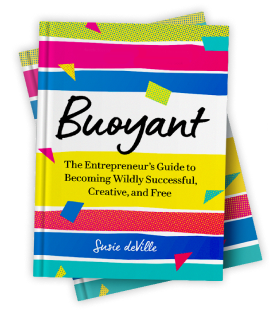The multiplication of technologies in the name of efficiency is actually eradicating free time by making it possible to maximize the time and place for production and minimize the unstructured travel time in between…Too, the rhetoric of efficiency around these technologies suggests that what cannot be quantified cannot be valued-that that vast array of pleasures which fall into the category of doing nothing in particular, of woolgathering, cloud-gazing, wandering, window-shopping, are nothing but voids to be filled by something more definite, more production, or faster-paced…I like walking because it is slow, and I suspect that the mind, like the feet, works at about three miles an hour. If this is so, then modern life is moving faster than the speed of thought or thoughtfulness.” ~ Rebecca Solnit, Wanderlust: A History of Walking
As a child of the 70s growing up in a remote town of 2,000 people, I can remember standing in front of the television, hand on the antenna rotor. I would turn the dial to the left, waiting for the dial to slowly grind toward the “W” label on the dial face.
“How ’bout now? Any better?” I’d ask my brother and sister who were seated on a sofa against the window.
“No,” they’d groan.
I’d try turning the dial to the right and would wait again.
“Let’s try East.”
We had one channel, Channel 4, and more times than not, the reception was too poor to really watch anything. When our patience with trying various directions of the antenna wore thin, we’d give up and find something else to do.
Most of the time, I’d head outside to the yard or to the woods.
There was a large, domed rock in the backyard that generally served as home plate when we played baseball. The flat cap of the rock jutted out of the soil and provided a wonderful perch for quiet contemplation and daydreaming.
I’d sit on “home plate” for hours, pulling up individual strands of grass, and rolling them through my fingers. I’d place the blade lengthwise between my hands and would blow into my hands across the grass, like an instrument reed. I became pretty proficient at making different pitches and calls.
I’d watch ants busying themselves in and out of miniature ant hills, Japanese beetles making little towers of themselves like circus acrobats, and bumble bees hovering around and on purple pom poms of clover flowers.
Robins, cardinals, and towhees sang and called to each other from the woods behind me.
I’d think about everything. And nothing.
Hours would pass, and by the time I was called to dinner, I had gone on several make-believe adventures and had had many imagined conversations.
I also had spent long stretches not thinking of anything at all in particular. I’d just let my thoughts lift up and out of the top of my head like bubbles and take the breeze before popping into small, sudsy explosions.
I was gifted with an older sister who lived in her imagination as much (if not more) than I. We’d play together and create a different world each day, or we’d choose to go our own way and drop into our fantasies solo.
And even though I was afraid of most everything and everyone as a child, I was supremely joyful, playful, and peaceful. My imagined world, my world of deep contemplation, always transported me to a zone of comfort, excitement, and curious wonder.
I continue to love this kind of escape into imagination and mind wandering as an adult. Not only do I find it as soul nourishing and enjoyable as I did as a child, but I also know time spent without any thought agenda is one of my greatest sources of creativity and ideation.
The French word flâneur means to stroll, to wander, to get lost on purpose. When I travel, I let myself resist the urge to pursue a certain agenda and decide instead to just take off on solo walks. I let the city or landscape reveal itself to me, block by block, or mile by mile.
I believe that we all (including myself!) could benefit immeasurably by gifting ourselves much more “Flâneuring of the Mind” time. No specific problems to solve, worries to wrestle, or tasks to prioritize and then check off lists.
Just delicious, long stretches of daydreaming.

Allowing creativity space fills the well and keeps us aware and present. Gentle and slower pacing for our feverish frontal lobes lets inklings surface and become leggy, awkward, idea teenagers.
Thoughts may spin around like Bambi on the ice and ultimately fade. Or, they may take on a robust life energy and form tendrils that find water and develop into your next big idea.
Think about this past week.
How much time did you allow yourself in pure, seemingly unproductive mind wondering? Did you gift your brain a daydream or two? How often did you let your mind get lost on purpose?
There’s a soft chair, a park bench, or a grassy patch under a tree that is calling. Open up some space for synapses to fire in random order—drop into no past, no present, no future.
Soothe your cramped and overthinking mind with a stroll going nowhere, and let your creativity have some sunshine, oxygen, and room to grow.










